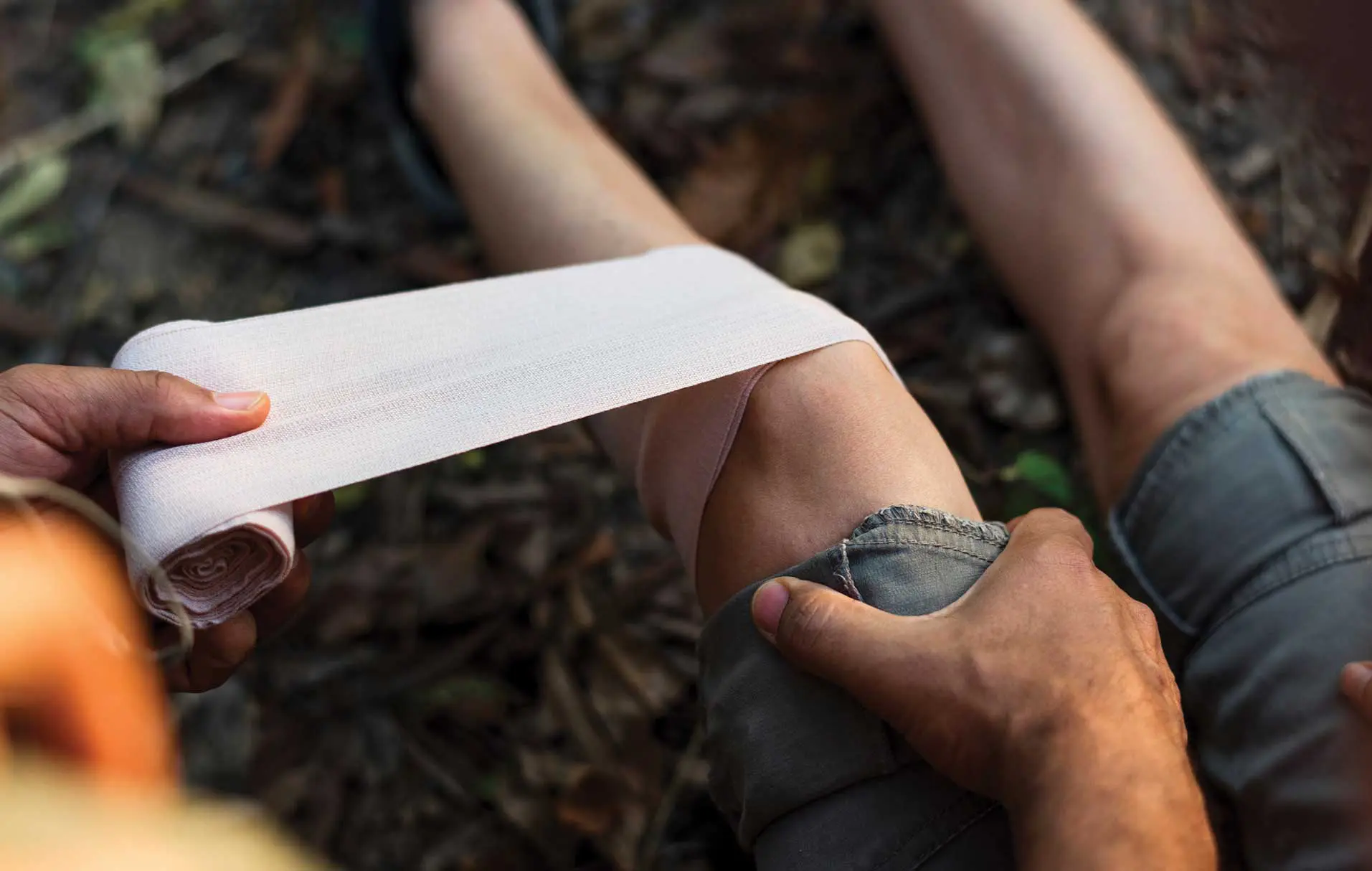You Are Bleeding, What is Your Next Move?
By MR. ANDREW HELLERSTEIN, STAFF WRITER
Cuts, scrapes, and bloody noses can happen at a moment’s notice, and the accompanying sight of blood is enough to make most people panic. It is important not to freak out, however. Simple first aid is often enough to treat a minor bleeding injury, although you may need to seek medical assistance depending on the severity of the wound. Before we discuss applying first aid, let us see what to do in the most urgent cases.
YOU SHOULD CALL 911 IF ONE OF THE FOLLOWING IS PRESENT:
- The wound is more than a one-fourth-inch deep, has ragged edges, or will not stop bleeding after being bandaged.
- The cut is on the face, genitals, joints, or chest/abdomen. Face and genital wounds are prone to infection, and joint wounds can reopen very easily unless properly stitched.
- Abdominal wounds might involve damage to internal organs, which is extremely serious.
- The victim has other medical conditions (such as diabetes) that the injury may exacerbate.
- The victim has been bitten by an animal or human. Bite wounds can quickly become infected.
- Stepping on rusty nails and other unsanitary objects can also cause infection, especially if the victim has not had a tetanus shot in the past 10 years.
TREATING A BLEEDING WOUND
If you need to apply first aid before help arrives or need to bandage a minor cut, follow these steps:
- Step 1. Have the injured person lie down if the wound is large or causing considerable bleeding. Apply a clean bandage or towel to the area and put moderate pressure on it with your hands. Putting pressure on a wound helps the blood clot faster, which will stop the bleeding. Do not remove the covering to check the wound for 15–20 minutes because removing it can cause the bleeding to restart. Also, do not remove the bandage if the wound bleeds through it. Apply another bandage on top of the first one and maintain pressure.
- Step 2. If the cut is on the victim’s arms or legs, lift the limb above the heart to slow the blood flow to the wound. If the bleeding continues after several minutes, you may need to apply a tourniquet at this stage.
- Step 3. Once the bleeding has stopped, remove the bandage. Wash your hands, then clean the wound with soap and water (but NOT with hydrogen peroxide). Try to carefully remove all pieces of debris from the wound. Call a doctor if an object is lodged in the flesh or if it is difficult to remove the debris.
- Step 4. Apply an antibiotic gel to the wound site; this step will help prevent scarring and infection.
- Step 5. Put a new bandage on the wound, rewash your hands, and let the victim rest. Replace with a new bandage daily until the wound has fully healed. Pay attention to possible signs of infection such as inflammation, fever, and leakage. If you notice signs of infection, call a doctor immediately.
Putting pressure on a wound helps the blood clot faster, which will stop the bleeding. Do not remove the covering to check the wound for 15–20 minutes because removing it can cause the bleeding to restart.
TREATING OTHER CAUSES OF BLEEDING
You might experience other types of bleeding from time to time. These injuries are usually less severe than a cut or puncture wound but can still be dangerous. Here is how to treat them and when to go to a doctor.
- Nose bleeds: Sit upright, lean slightly forward, and pinch your nostrils shut. Hold for 5 to 10 minutes or until the bleeding stops. If the bloody nose was caused by a hit to your nose, if it has lasted longer than 20 minutes, or if the bleeding makes it difficult to breathe, call a doctor.
- Gum bleeding: Gum bleeding, which can be caused by inflammation, can be relieved over time by practicing good dental hygiene, using an antibacterial mouthwash, and increasing your vitamin C intake. Call a doctor if the bleeding continues for multiple weeks or worsens quickly.
- Other types of bleeding: In more uncommon cases of bleeding such as from the eyes, ears, or anus, call a doctor immediately.
Nobody likes seeing blood but following these tips will help stop the problem from worsening and aid recovery. Otherwise, make sure your tetanus shot is up to date and keep a first aid kit on hand. Remember that if you are not sure about something, it is always best to call a doctor.


